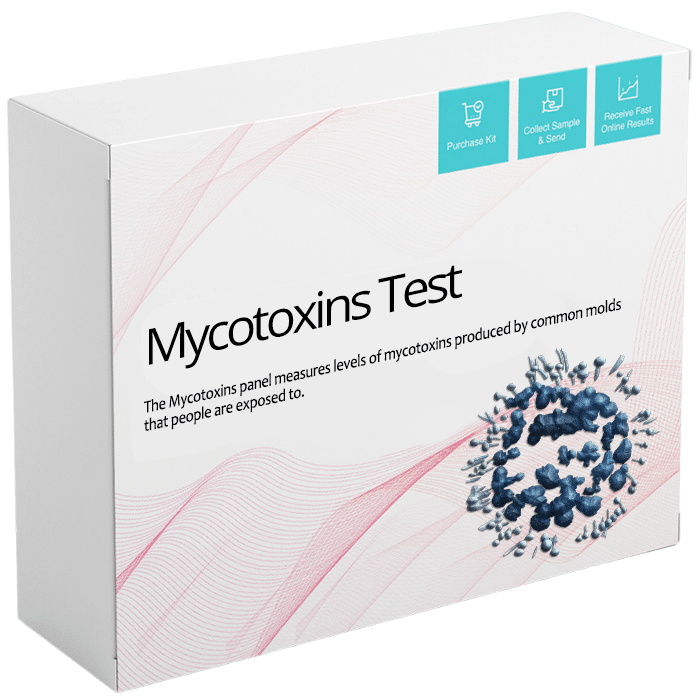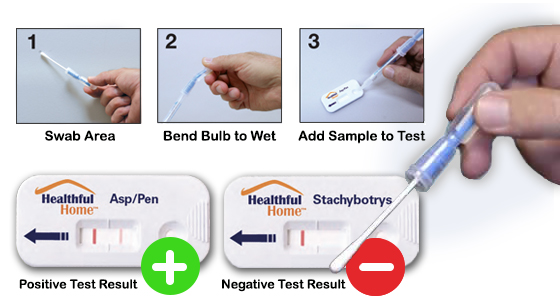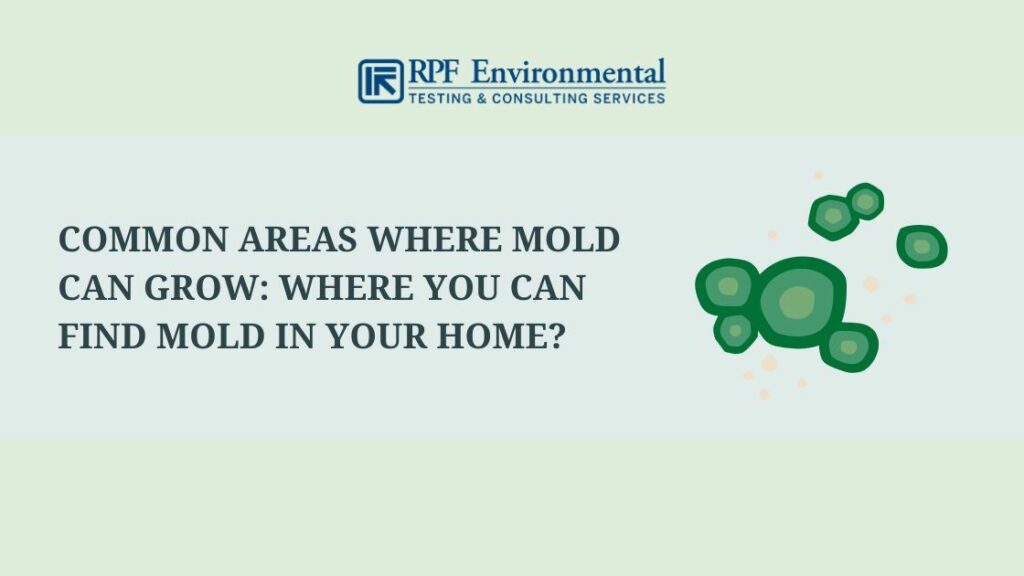Selecting the Right Mycotoxin testing Services for Your Business
Selecting the Right Mycotoxin testing Services for Your Business
Blog Article
Exactly How Mycotoxin Testing Assists Prevent Contamination and Safeguard Food Supplies

Mycotoxin screening is a vital practice in the food sector, functioning as a frontline protection versus contamination by damaging contaminants generated by mold and mildews. Via the application of innovative techniques like High-Performance Liquid Chromatography (HPLC) and Fluid Chromatography-Mass Spectrometry (LC-MS), food producers can properly detect and quantify mycotoxin levels in agricultural items. This proactive approach not only ensures conformity with rigorous security guidelines but also reduces health and wellness risks to customers. Routine screening strengthens brand name reputation and financial health by minimizing contamination-related cases. Exactly how exactly do these testing procedures incorporate right into the wider food safety strategy?
Understanding Mycotoxins
Understanding mycotoxins starts with acknowledging that they are hazardous secondary metabolites generated by certain molds, which can infect agricultural products. These metabolites are not vital for the development or recreation of the fungi however can have severe implications for human and animal health. Mycotoxins are typically found in staple crops such as corn, wheat, barley, and nuts, where they can multiply under certain problems of wetness and temperature.
There are a number of sorts of mycotoxins, each generated by different fungal types. Aflatoxins, created by Aspergillus types, are amongst one of the most notorious, known for their carcinogenic properties. One more significant team includes ochratoxins, generated by Aspergillus and Penicillium varieties, which have nephrotoxic impacts. Fusarium varieties generate fumonisins and trichothecenes, both of which are related to various severe and persistent wellness issues.

Risks of Mycotoxin Contamination
The threats of mycotoxin contamination are diverse, posturing substantial hazards to both food safety and security and public health and wellness. Mycotoxins, hazardous substances created by certain kinds of fungi, can infect a large range of agricultural products consisting of cereals, nuts, spices, dried out fruits, and coffee. As soon as these toxic substances infiltrate the food supply, they can lead to major health and wellness concerns such as liver damages, kidney failure, and even cancer. Susceptible populations, consisting of youngsters, the elderly, and immunocompromised people, are particularly in danger.
Economic effects are an additional major worry. Polluted plants can lead to substantial economic losses for farmers and food producers because of minimized yields and the requirement for expensive decontamination steps. In addition, international profession can be substantially impeded as countries impose stringent mycotoxin regulations to shield their populations, leading to declined shipments and stretched profession relationships.
Environmental factors such as environment change worsen the danger of mycotoxin contamination. Variations in temperature and humidity can create positive conditions for fungal growth, increasing the probability of contamination events. Hence, understanding and reducing these risks are critical for guaranteeing the safety and security and honesty of worldwide food products.
Methods of Mycotoxin Checking
Accurately identifying mycotoxin contamination in farming items is necessary for safeguarding public health and wellness and keeping food safety criteria. Different approaches are employed to discover and evaluate mycotoxins, each offering particular advantages and restrictions.
High-Performance Fluid Chromatography (HPLC) is an extensively used approach as a result of its high level of sensitivity and accuracy. It involves dividing mycotoxins from other substances in a sample, making it possible for precise quantification. Likewise, Liquid Chromatography-Mass Spectrometry (LC-MS) integrates fluid chromatography with mass spectrometry to supply comprehensive molecular information, making it particularly beneficial for recognizing numerous mycotoxins simultaneously - Mycotoxin testing Services.

Gas Chromatography-Mass Spectrometry (GC-MS) and Thin-Layer Chromatography (TENDER LOVING CARE) are additionally utilized, each with one-of-a-kind applications. GC-MS works for volatile mycotoxins, while TLC uses a less complex, cost-effective choice for preliminary screening.
Advantages of Regular Evaluating
Routine screening for mycotoxins in agricultural items offers numerous advantages, considerably adding to public wellness and food security. By recognizing contamination early, routine testing assists prevent the circulation pop over to this web-site of harmful foods, thereby lowering the danger of mycotoxin-related ailments among consumers. This positive strategy not only safeguards human health and wellness but also improves the general high visit this site right here quality of food materials.
Different countries and areas have actually established strict limits for mycotoxin levels in food and feed. Adhering to these restrictions through routine screening guarantees that providers and manufacturers fulfill legal criteria, thus staying clear of fines and profession barriers.
Furthermore, regular mycotoxin testing can result in significant economic advantages. Early discovery of contamination enables prompt treatment, decreasing prospective losses from extensive contamination. Carrying out regular screening procedures can additionally minimize recall costs and relevant responsibilities, which can be monetarily ruining.
In addition, normal testing supplies important data that can educate better farming methods and storage space problems. By recognizing patterns of contamination, manufacturers can adopt precautionary actions, consequently adding and decreasing future threats to the sustainability of the food supply chain.
Carrying Out Evaluating Methods
Carrying out reliable mycotoxin testing procedures is essential for guaranteeing the safety and security and top quality of farming items. Each stage needs to be scrutinized to pinpoint where mycotoxin contamination is most likely to occur.
Once critical control points are identified, choosing suitable screening approaches is vital. Common strategies consist of enzyme-linked immunosorbent assay (ELISA), high-performance fluid chromatography (HPLC), and mass spectrometry (MS) Each technique has its strengths and weaknesses; hence, choosing the right one depends on the specific mycotoxin being checked, the needed level of sensitivity, and offered sources.

Finally, integrating the testing methods into a thorough food safety and security management system is recommended. This enhances traceability and makes it possible for quick restorative actions when contamination is identified, consequently see post safeguarding the integrity of the food supply chain.
Conclusion
Mycotoxin screening is vital in preventing contamination and securing food materials by enabling very early discovery of damaging toxic substances generated by molds in farming items. Routine testing enhances brand name reputation, financial security, and count on in food safety and security by decreasing contamination-related losses and keeping high criteria in food production.
Mycotoxin testing is an indispensable method in the food sector, offering as a frontline protection versus contamination by damaging toxins generated by mold and mildews. An integrated approach entailing agricultural practices, storage monitoring, and normal testing can minimize the risks connected with mycotoxin contamination, making sure food safety and public health and wellness.
The dangers of mycotoxin contamination are complex, presenting substantial hazards to both food safety and public wellness.Regular testing for mycotoxins in farming products offers numerous benefits, considerably contributing to public health and food security.Mycotoxin screening is essential in stopping contamination and protecting food supplies by making it possible for very early detection of harmful toxic substances created by mold and mildews in farming products.
Report this page